#CRYPTOCURRENCY MARKET
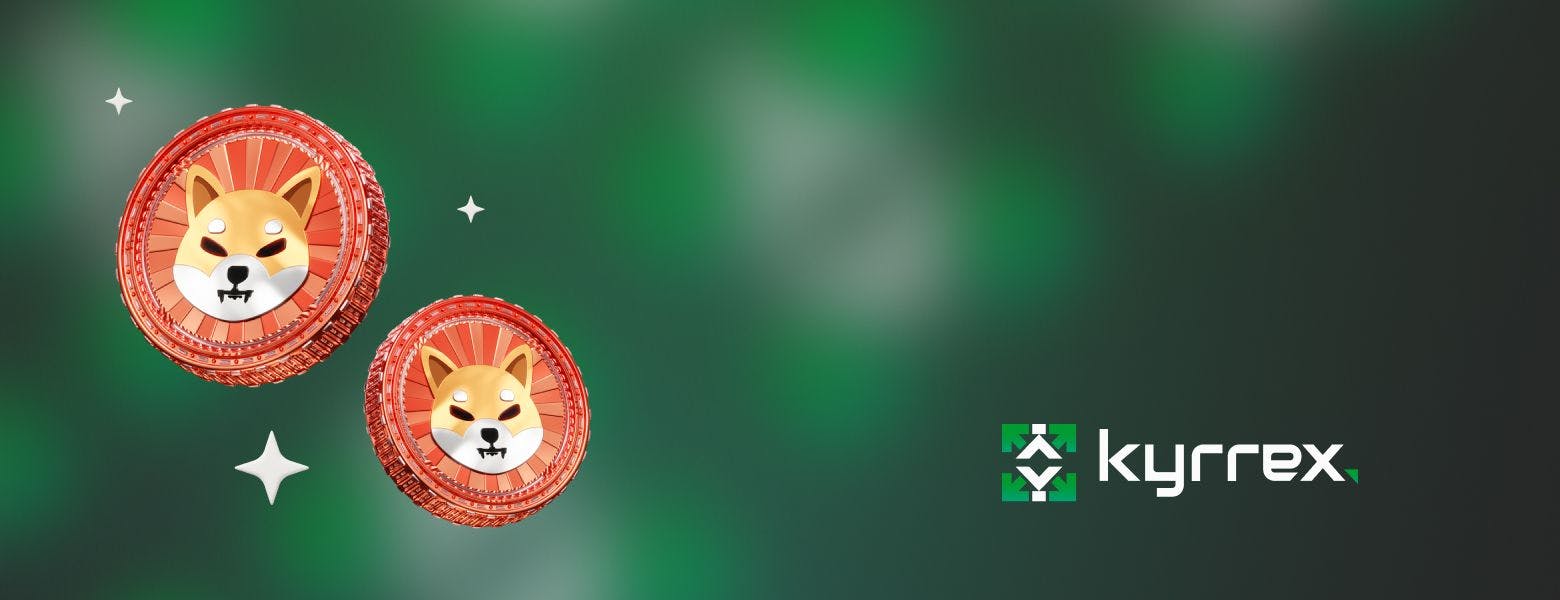
The Comeback Kid: Shiba Inu Crypto Roars Back to Life
Once written off as part of a fleeting meme coin craze, the Shiba Inu coin (SHIB) is staging a remarkable comeback. This dog-themed cryptocurrency captivated the public imagination in 2021 with its astronomical rise, generating fortunes for some SHIB crypto investors. But like so many headline-grabbing assets, SHIB's star faded as crypto entered a prolonged bear market. Now, signs point to SHIB breaking out of its slump. A surge in user activity, trading volume, and new addresses suggests "The Dogecoin Killer" is ready to reclaim the limelight.
The Sleeping Giant Stirs: How Shiba Inu Ascended from the Shadows
After months of lacklustre price action, SHIB suddenly sprang to life in late February. The Shiba Inu coin gained over 200% in February alone, its highest monthly return since the 2021 mania. This abrupt shift quickly reignited interest in the previously dormant Shiba Inu crypto community. But why?
Community Revival
According to blockchain analytics firm IntoTheBlock, daily active addresses on the SHIB network exploded from a February average of 3,100 to over 8,400 in March. On March 5th, active addresses hit a peak of 21,000—nearly a 2,000% increase from the previous month. This parabolic rise indicates the "Shiba Army"—SHIB's legion of loyal holders—has reactivated en masse.
Multiple factors likely converged to awaken the slumbering giant. The recent price surge itself generates interest by attracting new Shiba Inu crypto speculators. But SHIB's ecosystem may also be driving organic adoption. The launch of Shibarium, SHIB's Layer 2 scaling solution, and the introduction of K9 Finance, a liquid staking platform, have expanded functionality. The community's "burn portal" helps reduce circulation, increasing scarcity. While hype undoubtedly plays a role, SHIB's growth appears more substantive this time.
Market Frenzy Takes Hold
Alongside the user growth, trading activity has exploded. March 5th saw SHIB's trading volume exceed $16 billion, launching it into the top 5 most traded cryptocurrencies for that day. This rivals SHIB's daily volume at the peak of 2021's mega-rally.
The surge indicates that SHIB has regained its speculative appeal. Investors sense a potential repeat of history, hoping to ride another parabolic ascent. This buying frenzy is creating a feedback loop - higher prices attract attention, driving volumes higher, and pushing prices up further.
However, the data hints that more than reckless speculation is at play. According to analytics provider Santiment, SHIB holders have average profits of 52% on their Shiba Inu crypto investments, suggesting many are long-term believers, not just speculative punters.
The Shiba Inu Price Dance
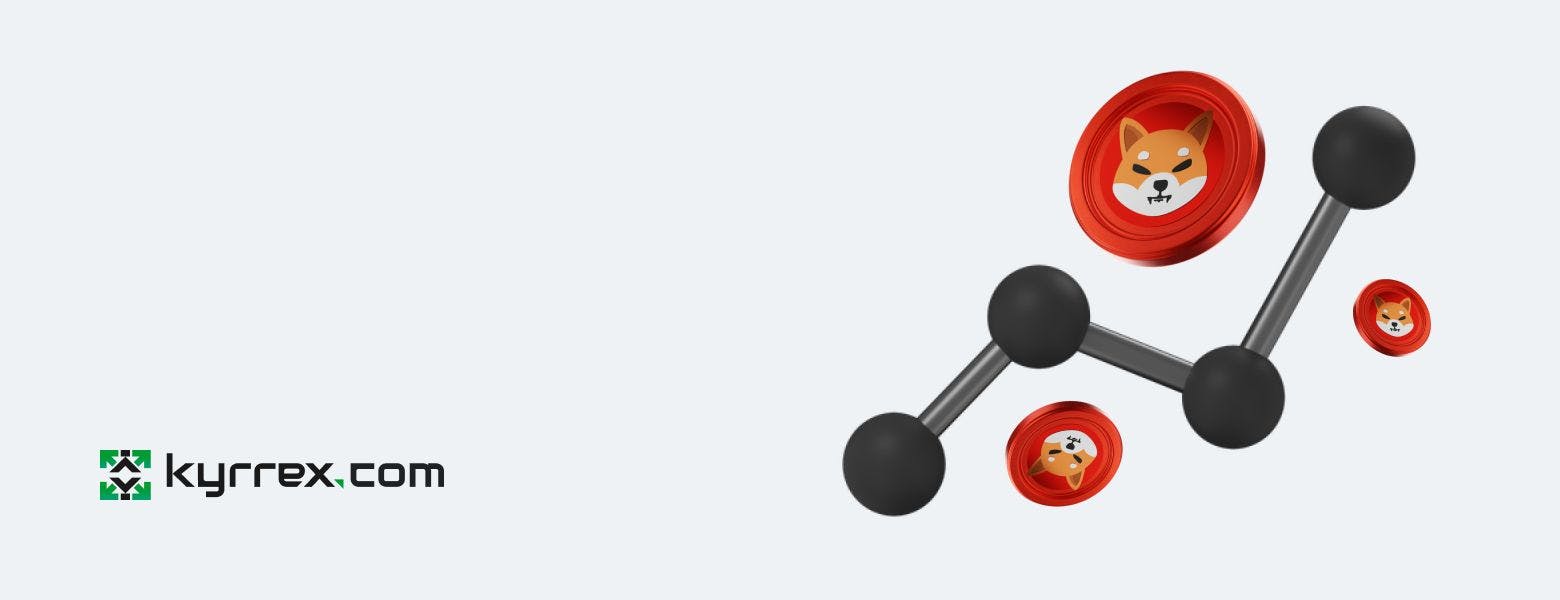
While short-term uncertainties persist, the long-term outlook seems decidedly bullish. The number of new SHIB addresses has jumped 60% in the past week, showing fresh capital flowing in. Analysts consider new address growth a strong indicator of organic user adoption.
Crypto analyst Ali Martinez has shockingly suggested SHIB could potentially reach $0.011—over 300 times its current price. While this seems fantastical, Shiba Inu has defied sceptics before.
Final Ascent or Dead Cat Bounce?
The crypto community remains divided on whether SHIB can reclaim its former glory. Critics argue little tangible progress has occurred, and its economics remain questionable. The recent mania may represent a "dead cat bounce"—a temporary resurgence before a final collapse.
However, proponents see the makings of an epic comeback. The heightened activity demonstrates that Shiba Inu still commands tremendous public interest. This perception of popularity is itself a powerful force. Investors are attracted to assets with strong narratives, and SHIB's underdog storyline resonates widely.
Shiba Inu Indicators: Red or Green?
SHIB's Relative Strength Index (RSI) remains highly elevated, indicating extreme investor enthusiasm that suggests the rally still has room to run. The Moving Average Convergence Divergence (MACD) indicator also shows strong upside momentum. As long as these technical factors align, SHIB may continue floating upward.
Of course, gravity can reassert itself at any time. With SHIB up over 300% in the past three months, a correction seems inevitable. The crucial support to watch is around $0.000033, where the rally could run out of steam and trigger panic selling. Shiba Inu has traded sideways over the past few days, hovering around the $0.000034 level. This marks a needed cooldown after the parabolic rally, which had pushed SHIB into overbought territory.
According to technical analyst Ali Martinez, SHIB faces immediate resistance at $0.000038. This area rejected the last rally attempt in late October 2021. A decisive break above could open the door to further gains, but the barrier has so far proven stubborn.
For now, traders seem content with absorbing recent gains. But with SHIB, sentiment can shift rapidly. Its speculative nature means both explosive rallies and sharp drops are never far away. This period of calm is unlikely to last long.
Shiba Inu Token Burns: A Gainful Gimmick?
According to data tracker Shibburn, nearly 14 billion Shiba Inu tokens have been permanently destroyed in just the past 24 hours. This equates to over $460,000 worth of SHIB removed from circulation at current prices. Vital figures within the project have vocally supported this supply-reduction effort, adding further legitimacy.
Lead developer Shytoshi Kusama hinted at an upcoming burn event for the related LEASH token, sparking Shiba Inu crypto community excitement. These burns help create deflationary pressure on SHIB, increasing the scarcity and theoretical value of the remaining tokens. Alongside the development updates and user growth, this narrative of a shrinking supply has reignited interest.
The fruits of this collective endeavour became clear as SHIB gained over 12% in a single day to reach $0.0000351. This represents a monthly gain of over 265%, cementing SHIB as one of crypto's top performers. The price explosion has also propelled Shibas's market capitalization back above the $19 billion threshold, reinforcing its status as a heavyweight asset.
Scaling New Heights: Towering Ambitions for 2024 and Beyond

Shiba Inu's epic price performance has prompted speculators to set their sights on ever more ambitious targets. Much will depend on the larger crypto market outlook surrounding ETFs and Bitcoin halving and the narratives that drive the imminent altcoin season.
Can Shiba Inu Break ATH in 2024?
The critical long-term barrier stands at SHIB’s all-time high of $0.000086. This historic peak represents the ultimate test and would require substantial momentum to overcome. The psychological $0.0001 mark also holds importance for unlocking SHIB’s next price discovery phase.
However, analysts caution that just breaching the $0.00004 mark poses a critical test. Previous Shiba Inu rallies have run out of steam around this resistance level. Sustaining the buying pressure to firmly overcome this barrier will be essential to keeping the uptrend intact and shooting towards the historical milestone achieved on October 28, 2021.
Can SHIB hit $0.0001 in 2024?
The mounting hype now has some asking - can SHIB realistically hit $0.0001 in 2024? This psychological level is seen as an important milestone enroute to "flipping" Dogecoin and cementing SHIB's position as the leading meme coin.
At current prices, Shiba Inu would need to gain nearly 300% to reach this mythical threshold. While still a tall order, the parabolic nature of crypto means massive daily swings of 10% or more are not uncommon. For reference, SHIB gained a staggering 900% in just one month during its initial 2021 breakout.
The ongoing bull run across crypto assets also boosts the odds of an extended SHIB surge. Funds tend to flow out of Bitcoin and into altcoins as rallies mature. The prospect of spot-based Ethereum ETFs could turbocharge this rotation. Under this scenario, SHIB could ride the wave along with other altcoins.
Dogecoin Rivalry Fuels Shiba Inu's Ambitions
Shiba Inu's recent revival is in part driven by its ambitions of dethroning Dogecoin as the leading meme coin. This Dogecoin killer is now neck and neck with DOGE in terms of market capitalization, reaching as high as #10 on CoinMarketCap's rankings. However, DOGE still holds the edge in terms of cultural cache and longevity in the cryptosphere.
By targeting DOGE, SHIB seeks to tap into the underdog narrative that propelled its rival to prominence. Both projects derived early publicity from their association with the “Doge” internet meme. This built a shared community of loyal holders who latched onto the lighthearted absurdity of owning “joke” cryptocurrencies.
However, Shiba Inu has expanded well beyond its initial origins. Upgrades like the Shibarium layer-2 network and Shibanet metaverse establish real-world utility and differentiate SHIB from pure meme-currency status. DOGE lacks comparable functionality, retaining its reputation as more of a novelty.
SHIB also enjoys zealous community backing, with proactive members coordinating initiatives like token-burning events to organically grow the ecosystem. This grassroots ethos fosters a sense of collective mission—an intangible yet invaluable asset.
Read here more about Dogecoin. How a meme became a leading cryptocurrency.
The Ultimate Target—SHIB to $0.01?
By combining greater sophistication with the power of meme culture, SHIB backers see a clear pathway to reaching its “moon” price target of $0.01. DOGE reaching $0.1 once seemed equally implausible, and its rise to fame sparked the template Shiba Inu now follows. This brewing rivalry promises fireworks as both communities compete for supremacy. Yet beyond the hype, tangible progress toward decentralization may mark the ultimate victory.
The Road Ahead for "The Dogecoin Killer"
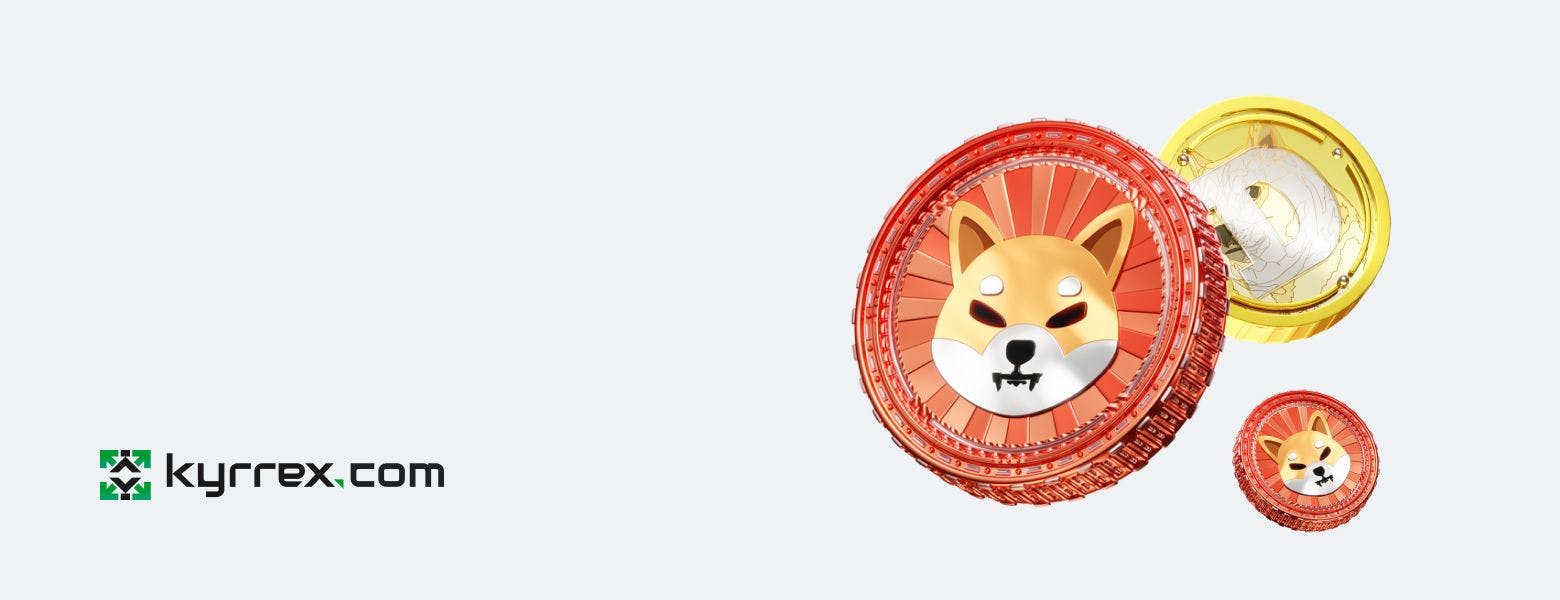
As the Shiba Inu ecosystem matures, the question becomes - does this project have meaningful longevity or will it fade away as hype dissipates? The answer likely lies somewhere in between. The Dogecoin killer appears well-positioned to cement itself as a top altcoin but needs to keep evolving beyond its meme-coin origin story.
The good news is that expansion is actively underway. Shibarium will boost speed and scalability, while Shibanet creates a virtual world integrating gaming and social media. These initiatives form the foundations for real-world utility to emerge.
Equally important is the continued community buy-in. The grassroots energy that initially rocketed SHIB to prominence has returned in full force. This suggests a loyal base of believers who will stay invested even through market turbulence. Their continued participation will remain vital.
However, scepticism regarding SHIB's fundamentals persists. Unlike platforms like Ethereum, SHIB lacks innovative technical features. The tokenomics also grant outsized control to a small group of insiders, raising questions about decentralization.
While the road ahead will have twists and turns, Shiba Inu has already defied the odds to become a borderline top 10 cryptocurrency. Its momentum appears more sustainable than during the heat of its viral 2021 surge. Perhaps even the staunchest critics should no longer bet against "The Dogecoin Killer." Its bark may end up being as fierce as its bite.
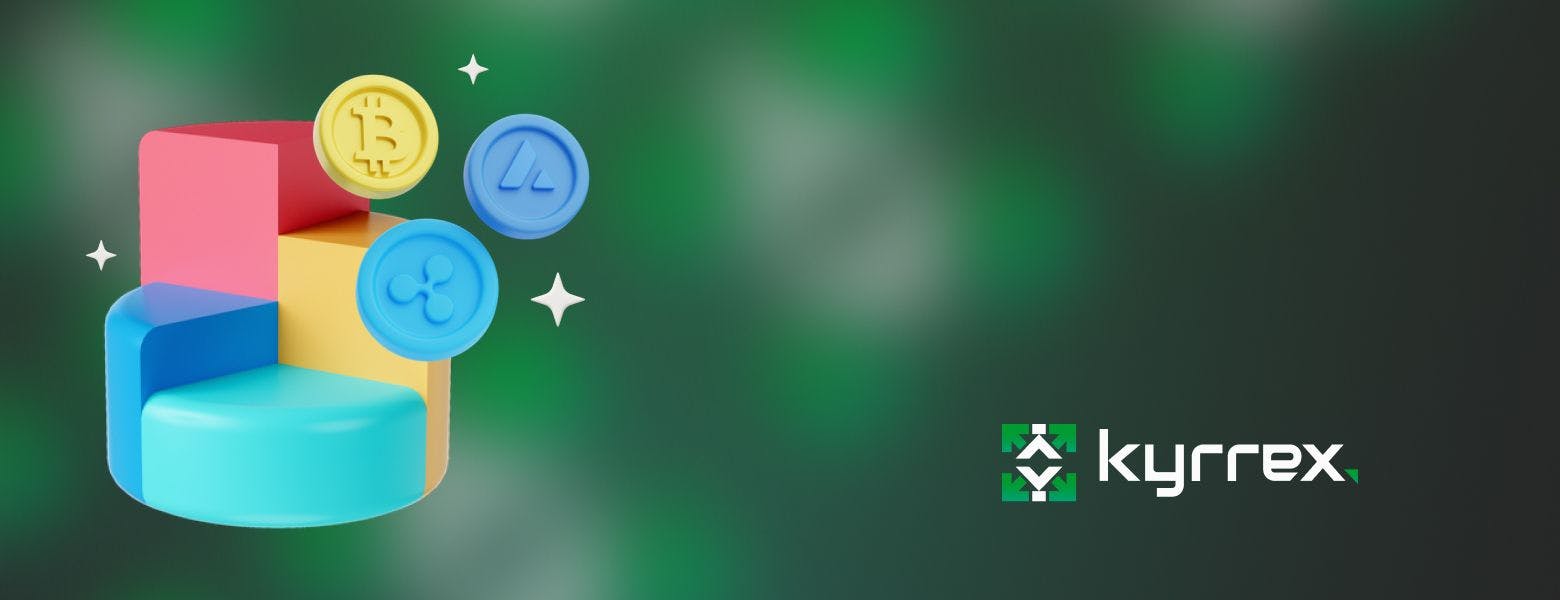
Tokenomics 101: Explaining the Basics and Beyond of Token Economy
Tokenomics, a fusion of 'token' and 'economics,' refers to the economic principles and models underpinning digital currencies within the blockchain sphere. This intricate ecosystem encompasses various factors such as token supply, demand, distribution methods, and overall market valuation, playing a pivotal role in the sustainability and success of cryptocurrency projects. Unlike traditional economies, governed by centralized financial systems and regulatory bodies, tokenomics operates within a decentralized framework, offering innovative approaches to value creation, transfer, and management.
As the digital asset landscape continues to expand, understanding the fundamentals of token economy becomes crucial for investors, developers, and enthusiasts alike. This article aims to demystify tokenomics, guiding you through its core components, real-world applications, and the impact on the broader crypto economy.
Tokenomics and token economy
Tokenomics represents the study and structural framework of a token's economy within the blockchain sphere, encompassing aspects like supply, demand, distribution, and valuation. In this system, the token economy operates under a unique set of rules and mechanisms distinct from traditional economies. Supply refers to the total quantity of tokens available, which can be fixed like Bitcoin's 21 million cap, or variable as seen in some governance token models. Demand is influenced by the token's utility, perceived value, and market conditions.
Distribution entails how tokens are allocated or issued to users, investors, and the project's team, which can significantly impact the token's initial and ongoing valuation. Valuation, meanwhile, derives from market perceptions, utility, and the token's inherent properties, such as security features or governance rights.
Unlike traditional monetary systems controlled by central authorities, the token economy leverages blockchain technology to enable a decentralized, transparent, and secure environment. Here, market dynamics are not influenced by central bank policies but by code, community consensus, and decentralized protocols. This paradigm shift from centralized to decentralized finance represents a significant evolution in how value and economy are conceptualized and managed within the digital age.
Key Components of Tokenomics
Tokenomics delves deep into the operational and economic facets of tokens within blockchain projects. Understanding these components is critical for grasping how tokens gain and maintain their value.
1- Minting
The process of minting involves creating or generating tokens within a blockchain project. Different protocols have varied methods; Bitcoin, for example, rewards miners for validating transactions, thus "minting" new coins. Ethereum initially distributed Ether through an Initial Coin Offering (ICO), but also mints new Ether as rewards in transaction processing. The method of minting impacts the initial and ongoing supply of tokens, influencing scarcity and value.
2- Utility
Tokens must serve a purpose within their ecosystems; this utility drives demand. Bitcoin's primary utility is as a digital currency, while Ethereum's Ether is used to perform transactions and run applications on its network. Other tokens might grant voting rights in project governance (governance tokens), access to services, or act as a stake in decentralized finance (DeFi) platforms.
3- Supply and Demand
The principles of supply and demand heavily influence token economics. If a token has a capped supply (like Bitcoin), scarcity can increase demand, potentially raising its value. Conversely, if a token's supply is vast or infinite, its value might be lower unless there is significant demand. Market perception, technological advancements, and broader economic factors also play into this dynamic.
4- Distribution and Allocation
The method of token distribution can affect its long-term value and security. Initial allocation might occur through public sales (ICOs or IDOs), community rewards, or allocations to founders and early investors. Projects like Solana and Cardano have allocated significant portions of their tokens to insiders but have maintained public interest through transparency and project utility.
5- Vesting and Inflation
Vesting schedules and inflation control are critical for maintaining a token's value and ensuring project longevity. Vesting prevents market flooding by slowly releasing tokens to developers or investors, maintaining stability. Projects can control inflation through mechanisms like token burning or halving events, as seen with Bitcoin, which undergo periodical "halvings" reducing the reward for mining new blocks, thus controlling the rate of new token introduction into the ecosystem.
Each of these components must be carefully balanced to create a sustainable and successful tokenomics model. Missteps in any area can lead to issues like rapid devaluation, lack of interest, or even project failure.
Examples of Real-World Token economy in Action
Tokenomics comes to life in various blockchain projects, each employing unique strategies to enhance their ecosystem's value and usability.
Ethereum
As a pioneer, Ethereum revolutionized the blockchain space by introducing smart contracts. These are self-executing contracts with the terms of the agreement directly written into lines of code. Ethereum's token, Ether, serves primarily as a utility token, necessary for conducting transactions and executing contracts on the Ethereum network. Its initial distribution was through an ICO, establishing an initial supply that has since increased due to block rewards. Ethereum's shift from Proof of Work (PoW) to Proof of Stake (PoS) in the Ethereum 2.0 upgrade impacts its tokenomics by changing the reward structure and potentially reducing the rate of new Ether creation, influencing scarcity and value. Transaction fees, known as "gas," also play a crucial role, as they vary based on network demand, adding an economic layer to operation prioritization.
Solana
Known for its incredible speed and lower transaction costs, Solana has emerged as a highly efficient blockchain platform. Solana's native token, SOL, is used to pay for transactions and for staking as part of its Proof of History (PoH) and Proof of Stake (PoS) hybrid consensus mechanism. The initial supply was determined at its launch, with ongoing emissions governed by inflationary policies aimed at incentivizing validators and stakers. Solana has a deflationary aspect as well, where transaction fees are burned, reducing the total supply and potentially increasing the value of remaining SOL tokens over time.
Cardano
Cardano differentiates itself through a strong emphasis on peer-reviewed academic research and formal methods in its development process, ensuring a high degree of security and scalability. ADA, Cardano's native token, is used for transaction fees and staking within its PoS consensus mechanism, Ouroboros. The initial supply was set during its ICO, with a defined maximum supply cap to prevent inflation. Staking ADA not only supports network security and operation but also rewards users, distributing new ADA created through inflation and transaction fees based on their stake. The design aims to balance between rewarding holders and ensuring long-term sustainability, reflecting Cardano's research-driven approach to blockchain development.
Diverse approaches to tokenomics can significantly impact a project's success and the value of its associated tokens. Each project's unique strategy — whether focusing on technological innovation, efficiency, or academic rigor — plays a critical role in shaping its token economy and overall ecosystem.
Impact of Token economy on Investors and Projects
Token economy significantly influences both investor decision-making and the overall success of cryptocurrency projects. Investors scrutinize tokenomics for insights into a project's long-term viability, supply scarcity, and potential return on investment. They assess factors such as token distribution, utility, and inflationary controls to gauge the risk and potential growth of their investments. A project with clear, fair token distribution and a practical utility for its token is more likely to attract and retain investors.
For projects, well-structured tokenomics is crucial for sustainability and achieving set objectives. Proper tokenomics ensures that the project is adequately funded and that incentives are aligned between the developers, users, and investors. It helps maintain a balanced ecosystem where tokens circulate effectively, facilitating transactions, rewarding participants, and funding continued development. The long-term success and adoption of crypto projects heavily depend on their tokenomic models, which should be designed to support growth, stability, and engagement within the ecosystem.
Trends and Challenges in Crypto Token Economy
Trends already influencing token economics include the integration of governance tokens, enhancing decentralized decision-making within projects. These tokens empower holders with voting rights on project developments, potentially increasing user engagement and investment in the project's future. Additionally, the trend towards deflationary token models, where the total supply decreases over time, could create scarcity, driving demand and potentially increasing token value.
Another emerging trend is the use of layer-two solutions and cross-chain interoperability to enhance transaction efficiency and reduce costs, directly impacting the utility and attractiveness of a project's token. However, these advancements come with challenges, including regulatory uncertainty and the need for robust security measures to prevent fraud and ensure user trust.
However, creating a balanced and sustainable token economy remains a complex challenge. Projects must design tokenomics that incentivize participation and growth without leading to over-centralization or excessive inflation. They must navigate these waters while maintaining compliance with an ever-changing global regulatory landscape, which can significantly impact token valuation and project operations.
Conclusion
Tokenomics is essential in assessing a cryptocurrency's potential. A well-designed economic model can lead to a project's success, while a poor one can doom it. For investors and creators alike, a deep understanding of tokenomics is crucial in navigating the burgeoning field of digital currencies.
For more info and trendy articles check our Crypto Blog.
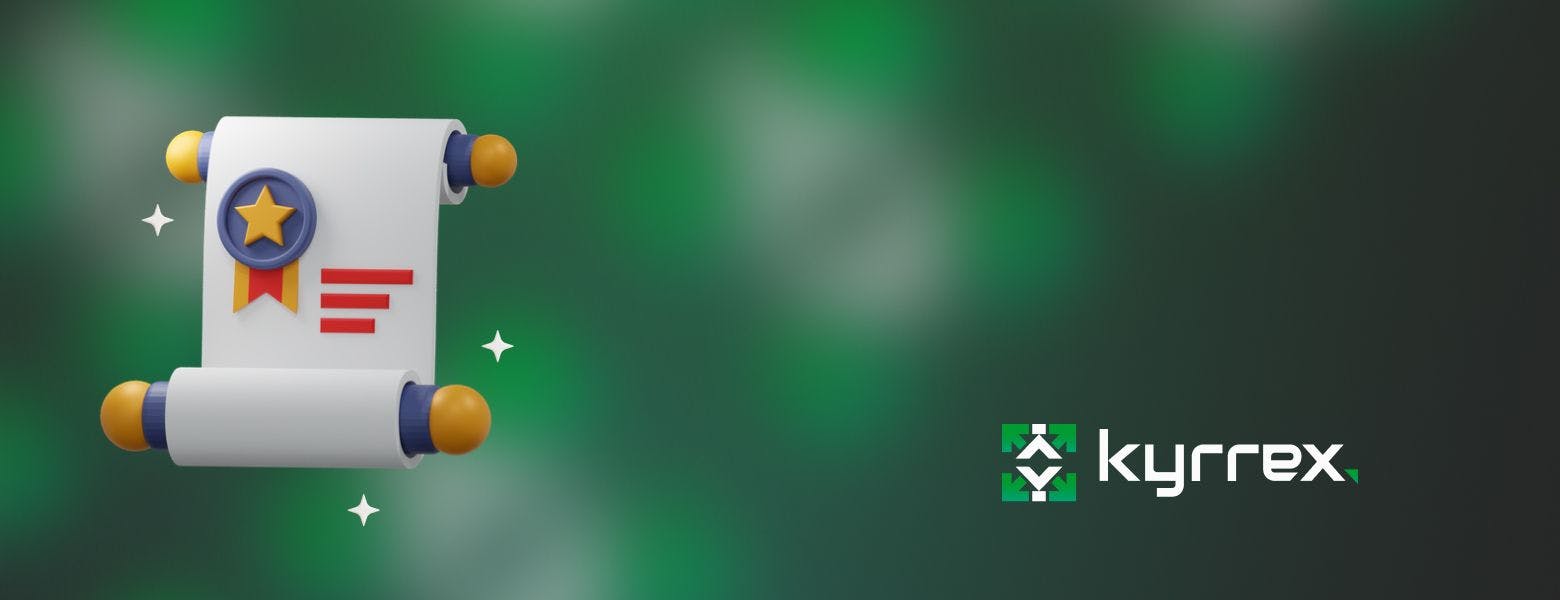
MiCA Unveiled: Guide to Licensing and Compliance for Crypto Companies
In a fragmented regulatory landscape, the Markets in Crypto-Assets (MiCA) regulation emerges as a beacon of standardization and security. The European Union's pioneering approach to crypto regulation, embodied in MiCA, sets a precedent for the global crypto market. MiCA isn't just another regulatory hurdle; it's a transformative framework that promises to bring clarity and confidence to both crypto businesses and investors. As we delve into this comprehensive guide, we'll uncover the intricacies of MiCA, illuminating the path for businesses striving to navigate this new regulatory landscape.
Understanding the Scope of MiCA
The MiCA crypto regulation is tailored to encompass the broad spectrum of crypto-assets, excluding only those classified as financial instruments under existing EU legislation. This inclusivity marks MiCA as a comprehensive framework, addressing a range of assets from stablecoins to utility tokens. The regulation aims to establish uniform rules across all EU member states, effectively eliminating the regulatory patchwork that currently complicates the crypto market.
The heart of MiCA revolves around consumer protection, market integrity, and financial stability. By introducing a standardized set of rules, MiCA crypto regulation ensures a safer environment for investors, shielding them from the market's volatility and the potential risks associated with digital asset investments. For crypto businesses, this translates to a more predictable and secure operating environment.
Licensing Requirements under MiCA
Navigating the licensing landscape under MiCA requires a deep understanding of its requisites. Primarily, any crypto company operating within the EU must be fully licensed and compliant with MiCA standards. This includes a broad spectrum of entities from crypto exchanges to wallet providers.
The licensing process under MiCA is meticulous and requires companies to demonstrate a high level of operational and financial robustness. Key elements include robust IT infrastructure, stringent AML (Anti-Money Laundering) policies, and comprehensive risk management frameworks. These requirements are not just formalities; they are essential to ensuring that companies can withstand the volatile nature of the crypto market and protect their clients' investments.
Here is a breakdown of the requirements and standards for obtaining a MiCA crypto license:
- Submission of Application: Legal entities or other undertakings intending to provide crypto-asset services must submit their application for a MiCA license to the competent authority of their home Member State.
- Application Contents: The application should contain specific information, including proof of the good repute and appropriate knowledge, skills, and experience of the management body, details of shareholders with qualifying holdings, descriptions of internal control mechanisms, ICT systems, procedures for segregation of clients' crypto-assets and funds, and complaints-handling procedures.
- Assessment of Completeness: Competent authorities will assess whether the application is complete within 25 working days of receipt. If the application is not complete, a deadline will be set for the applicant to provide any missing information.
- Notification of Complete Application: Once an application is deemed complete, competent authorities will notify the applicant crypto-asset service provider.
- Assessment of Compliance: Competent authorities will assess the application for compliance with MiCA requirements within 60 working days of receiving a complete application. This assessment may include a review of the crypto-asset white paper and cooperation with anti-money laundering and counter-terrorist financing bodies.
- Draft Decision: A fully reasoned draft decision granting or refusing authorization will be made by the competent authorities based on the assessment.
- Potential Suspension of Assessment: The assessment period may be suspended if the competent authorities request additional information from the applicant. The suspension shall not exceed 20 working days.
- Consultation Before Authorization: Before granting or refusing authorization, competent authorities shall consult relevant bodies or authorities as required.
These steps outline the structured approach to obtaining a MiCA license, focusing on compliance, transparency, and the integrity of the applicant.Top of Form Each step in this process is crucial for obtaining and maintaining a MiCA crypto license. It's important for companies to approach each stage with thorough preparation and a commitment to maintaining high standards of compliance.Top of Form
MiCA's licensing requirements are designed to foster a transparent, fair, and stable crypto market in the EU. For a crypto-fiat bank like Kyrrex, complying with these regulations is a testament to its commitment to providing secure and compliant crypto services. Kyrrex's alignment with MiCA regulations showcases its dedication to maintaining the highest standards of operational integrity and customer protection.
Businesses that Fall Under the MiCA Licensing Requirements
Here's a general list of the types of companies and businesses that the MiCA licensing requirement covers:
- Crypto-Asset Service Providers (CASPs): These include entities operating trading platforms, exchanges (crypto-to-fiat and crypto-to-crypto), and those offering custody or administration services for crypto-assets.
- Issuers of Asset-Referenced Tokens (ARTs): Companies issuing ARTs, which are crypto-assets aiming to stabilize their value by referencing other assets or a combination of assets, including fiat currencies.
- Issuers of E-Money Tokens (EMTs): Entities issuing EMTs, which are designed to maintain stable value by referencing a single fiat currency, similar to electronic money.
- Providers of Crypto-Asset Exchange Services: Companies facilitating the exchange of crypto-assets for fiat currency or other crypto-assets.
- Crypto-Asset Custody and Wallet Providers: Businesses offering secure storage and management of crypto-assets for clients.
- Firms Providing Crypto-Asset Advisory Services: Companies offering advice related to investment in crypto-assets.
- Crypto-Asset Issuers (excluding ARTs and EMTs): Entities responsible for the creation and initial distribution of various types of crypto-assets, excluding asset-referenced and e-money tokens.
Compliance Challenges and Solutions
Compliance with MiCA presents a unique set of challenges for crypto companies. Adapting to a new regulatory environment requires significant changes in operational, legal, and compliance structures. The primary challenge lies in the constant evolution of the crypto market, which demands that companies remain agile and informed.
To overcome these challenges, companies should implement a number of constructive measures, especially the ones outlined below:
- Invest in Compliance Systems: Companies should allocate resources to develop and maintain robust compliance systems that align with MiCA standards.
- Staff Training: Regular training programs for staff to ensure they are up-to-date with MiCA regulations and compliance procedures.
- Conduct Regular Audits: Implement a schedule for regular internal audits to assess and ensure adherence to compliance standards.
- Ongoing Reviews: Conduct periodic reviews of internal processes and policies to align with evolving MiCA regulations.
- Technological Advancements: Utilize advanced technology solutions to streamline and enhance compliance processes.
- Collaboration with Regulators: Engage in ongoing dialogue and collaboration with regulatory bodies for insights and guidance on compliance matters.
- Industry Collaboration: Work alongside other industry players to share best practices and navigate MiCA compliance complexities together.
- Proactive Approach: Adopt a forward-thinking strategy to view compliance not just as a requirement, but as an opportunity for growth and establishing market leadership.
Each of these steps plays a crucial role in ensuring that a company meets the MiCA compliance requirements. By adopting a proactive approach, companies can turn these challenges into opportunities for growth and market leadership.
For Kyrrex, adhering to MiCA standards is part of its broader strategy to ensure the highest level of service quality and security. It reflects the company's dedication to being at the forefront of regulatory compliance, setting a benchmark for other players in the industry.
Preparing for the Future: Next Steps for Crypto Companies
As MiCA paves the way for a regulated crypto market in the EU, companies need to prepare for its implementation. The first step is gaining a thorough understanding of MiCA's provisions and how they impact different aspects of crypto operations.
Crypto companies should start by assessing their current compliance status and identifying areas that need improvement. This may involve restructuring certain business practices, enhancing security measures, and updating internal policies.
It's also crucial for companies to stay updated with ongoing regulatory developments. Engaging with legal and compliance experts can provide valuable insights and ensure that companies remain on the right side of these evolving regulations.
Conclusion
MiCA marks a significant milestone in the journey towards a regulated and secure crypto market. For companies operating in this space, understanding and complying with MiCA is not just about adherence to regulations; it's about embracing a new era of transparency, security, and consumer trust.
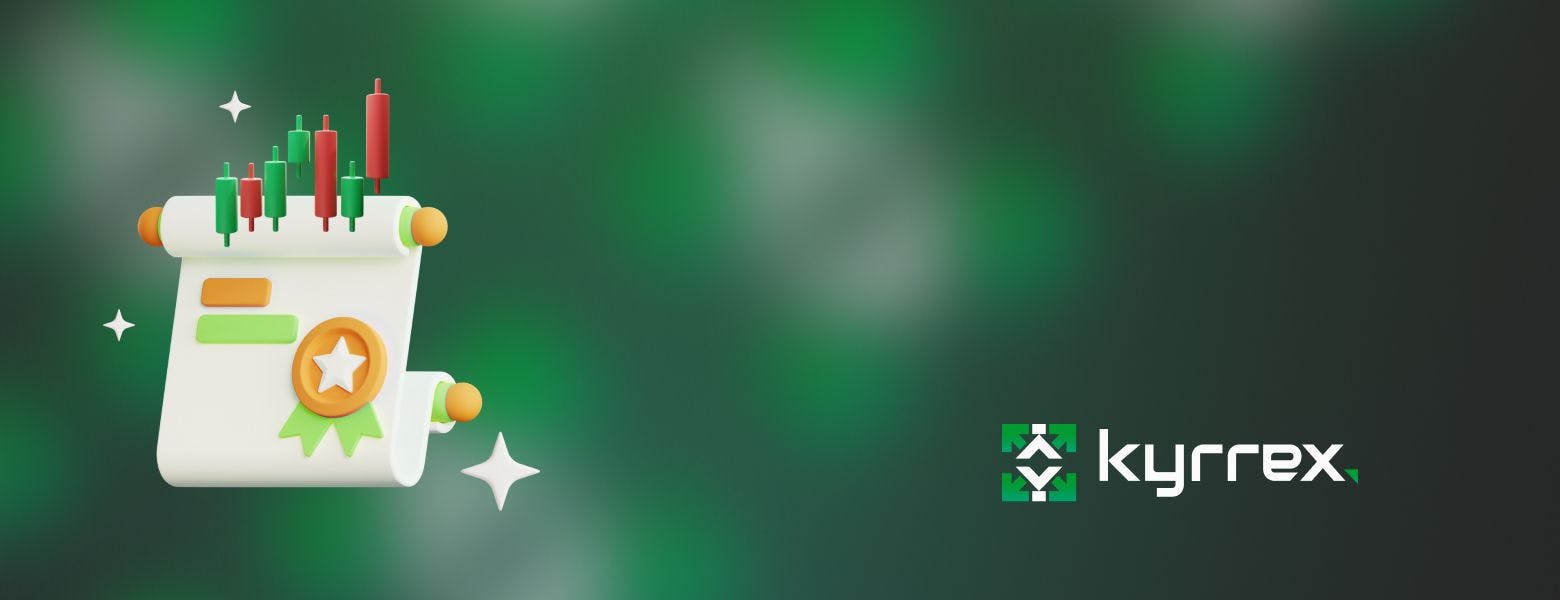
How to Earn Crypto Trader Certificate
Are you intrigued by the world of cryptocurrency trading and its potential for lucrative returns? If so, obtaining a crypto trader certificate can open doors to exciting opportunities and help you stand out in this competitive industry. In this blog post, we’ll guide you through the process of “how to earn crypto trader certificate”, discuss the benefits and types of certifications, and provide insights on top certification programs. Let’s embark on this journey to become a certified crypto trader and unlock new possibilities in the dynamic world of digital assets.
Key Takeaways
- Crypto trader certifications equip professionals with knowledge and skills related to trading strategies, market analysis, and risk management techniques.
- Benefits of a crypto trader certificate include enhanced credibility and networking opportunities for career advancement in the cryptocurrency market.
- To maintain certification status it is necessary to adhere to recertification requirements such as demonstrating continued professional development, taking additional courses, attending workshops, etc.
Understanding Crypto Trader Certifications
Crypto trader certifications are designed to equip professionals with the knowledge and skills needed to excel in the cryptocurrency trading landscape. They typically focus on trading strategies, market analysis, and risk management techniques, ensuring that certified traders are well-versed in the fundamentals of cryptocurrency and its associated market dynamics.
Certifications not only provide a competitive edge in the job market, but also help individuals make informed decisions when trading cryptocurrencies. Renowned certification programs, such as the Blockchain Council and the Cryptocurrency Certification Consortium, are recognized worldwide and cater to various cryptocurrency transactions and trading activities.
Types of Crypto Trader Certificates
Crypto trader certificates cater to different levels of expertise and focus on specific aspects of cryptocurrency trading. For instance, some certifications may concentrate on blockchain technology, while others may emphasize cryptocurrency trading strategies or risk management.
Moreover, certain programs offer specialized courses tailored to a particular programming language or developer specialization, such as smart contracts or decentralized applications. When selecting a certification program, identifying your goals and desired area of expertise is key to ensuring a comprehensive learning experience that aligns with your objectives.
Benefits of Earning a Crypto Trader Certificate
Earning a crypto trader certificate comes with numerous benefits. Increased credibility and recognition in the cryptocurrency industry are significant advantages, as certified traders demonstrate their expertise and capabilities.
Furthermore, a crypto trader certificate can unlock new career prospects and provide valuable networking opportunities with industry leaders and fellow traders. Obtaining a certificate can be a stepping stone towards a successful career in cryptocurrency trading, especially as the cryptocurrency market continues to evolve, necessitating up-to-date knowledge on the latest trends and best practices.
Path to Becoming a Certified Crypto Trader
The journey to becoming a certified crypto trader involves several steps. Firstly, you must select the right certification program based on your goals, experience, and desired area of expertise within cryptocurrency trading. Before making a decision, consideration should be given to the program’s reputation, cost, and the type of certificate it offers.
Next, you must prepare for the certification exam by taking relevant courses, attending workshops, and gaining practical experience in cryptocurrency trading. Finally, you need to successfully pass the certification exam to demonstrate your proficiency in cryptocurrency trading and earn the coveted crypto trader certificate.
1. Choosing the Right Certification Program
When selecting a certification program, it is important to consider factors such as the program’s objectives, your background, and your desired field of expertise in cryptocurrency trading. Some popular certification programs include the Blockchain Council Certified Crypto Trader (BCCT) and the Certified Crypto Trader (C4), which provide comprehensive knowledge of cryptocurrency trading and investing.
Keep in mind that the certification process usually involves a cost, and financial aid may not be available for non-degree programs or individual courses. Therefore, it is essential to weigh the potential benefits of the certification against the costs and choose a program that suits your needs and budget.
2. Preparing for the Certification Exam
Preparing adequately for the certification exam is of utmost importance. This involves reviewing the material covered in your chosen program, practicing with sample questions, and becoming familiar with the exam format.
Additionally, it is beneficial to gain practical experience in cryptocurrency trading, financial trading, stock markets, and managing digital assets by engaging in simulated trading activities provided by some cryptocurrency exchanges or utilizing demo accounts or paper trading platforms.
In the ever-evolving cryptocurrency trading landscape, continuing education and professional development remain pivotal. Enrolling in advanced courses and workshops, attending conferences, and staying updated on industry trends can help you maintain your expertise and stay ahead of the curve.
3. Taking and Passing the Certification Exam
The format of the Crypto Trader Certification Exam may differ depending on the organization providing the certification. It may include multiple-choice and true/false questions, as well as multiple select questions. The number of questions can range from 30 to 100, and the duration of the exam can range from 20 minutes to several hours. Reviewing the details of the certification exam you are interested in is of prime importance.
To pass the certification exam, you must be adequately prepared and knowledgeable in the topics included in the exam. This involves reading the instructions carefully and answering the questions accurately. Successfully passing the exam demonstrates your proficiency in cryptocurrency trading and earns you the crypto trader certificate.
Top Crypto Trader Certification Programs
Several top crypto trader certification programs offer comprehensive and industry-recognized certifications. These programs, such as the Blockchain Council and C4, provide in-depth knowledge of cryptocurrency trading, blockchain technology, and digital currency trends.
Each certification program caters to different aspects of cryptocurrency trading and technology, ensuring that there is a suitable option for everyone, regardless of their experience level or area of interest. In the following sections, we will delve into the details of some of the most popular certification programs.
1. Blockchain Council
The Blockchain Council offers the Certified Cryptocurrency TraderTM (CCT) certification, which covers the following topics:
- Advanced trading strategies
- Market analysis
- Risk management techniques
- Blockchain fundamentals
- Smart contracts
- Distributed ledger technology
- Cryptocurrency trading
This comprehensive certification program provides a solid foundation for both beginners and experienced traders, helping them gain the necessary skills and knowledge to excel in the cryptocurrency trading landscape. With the CCT certification, traders can showcase their expertise and capabilities, giving them a competitive edge in the industry.
2. C4
C4, or the Cryptocurrency Certification Consortium, offers various certifications catering to different aspects of cryptocurrency trading and technology. The Certified Bitcoin Professional (CBP) certification evaluates professionals’ understanding of cryptocurrency trading and investing, while the Certified Ethereum Developer (CED) certification assesses professionals’ knowledge of Ethereum development.
These certifications not only provide credibility and recognition in the cryptocurrency industry, but also unlock new career prospects and networking opportunities. Pursuing a C4 certification can be an excellent investment for those looking to advance their career in the rapidly evolving world of cryptocurrencies.
3. Other Notable Certification Programs
In addition to the Blockchain Council and C4 certification programs, there are other notable certification programs that offer specialized courses and certifications in areas such as blockchain development, security, and compliance, as well as blockchain technologies. Examples include the Cryptocurrency Certification Program from MIT and the Certified Cryptocurrency Trader (CCT) certification by the Blockchain Council.
These programs provide comprehensive education and certifications in various aspects of cryptocurrency trading and technology, ensuring that there is a suitable option for every aspiring crypto trader. No matter your experience level or area of interest, there is a certification program designed to help you succeed in the world of cryptocurrency trading.
Enhancing Your Crypto Trading Skills
As a certified crypto trader, continually improving your trading skills and staying updated on the latest industry trends and best practices is key. This involves taking advanced courses and workshops, as well as engaging in networking and community involvement.
By actively participating in the crypto trading community and staying informed about new developments in the crypto markets, you can refine your trading strategies, identify market opportunities, and ultimately, achieve greater success in your trading endeavors.
Advanced Courses and Workshops
Advanced cryptocurrency courses and workshops provide in-depth knowledge and practical skills in specific areas of cryptocurrency trading, such as algorithmic trading and technical analysis. Understanding cryptocurrency fundamentals is crucial for success in this field. For example, Udemy’s Algorithmic Cryptocurrency Trading course consists of 2.5 hours of on-demand video, one article, and 13 downloadable resources, offering a comprehensive learning experience for traders looking to enhance their skills.
Participating in advanced courses and workshops can offer several benefits.
- Staying informed about the latest trends and advancements in the crypto trading domain
- Gaining valuable knowledge and skills to enhance your trading strategies
- Accessing expert guidance and insights from industry professionals
- Networking with other traders and industry professionals, which can contribute to your career advancement.
These opportunities in decentralized finance can help you stay ahead in the ever-evolving world of crypto trading.
Networking and Community Involvement
Staying informed about the latest developments in the cryptocurrency trading industry and sharing knowledge with fellow traders is greatly facilitated by networking and community involvement. Some popular resources for networking and community involvement include:
- BIC Telegram
- Crypto communities
- Crypto Discords
- Wolf of Trading
- Crypto University
To effectively utilize networking and community resources, it is essential to be actively engaged. This includes participating in conversations, inquiring about relevant topics, and contributing your expertise. By connecting with industry professionals and staying informed about the latest trends, you can continuously improve your trading performance and achieve greater success in the crypto trading landscape.
Maintaining and Renewing Your Crypto Trader Certificate
To demonstrate your continued professional development and expertise in cryptocurrency trading, maintaining and renewing your crypto trader certificate is vital. This involves meeting recertification requirements, which typically vary depending on the certification program.
Engaging in ongoing professional development, in addition to meeting recertification requirements, is key to staying current in the rapidly evolving cryptocurrency trading landscape. This includes attending conferences and workshops, participating in relevant online forums and communities, and staying updated on industry trends and best practices.
Recertification Requirements
Recertification requirements vary depending on the certification program, but typically involve:
- Demonstrating continued professional development and expertise in cryptocurrency trading
- Taking additional courses
- Attending workshops
- Engaging in professional development activities relevant to cryptocurrency trading.
It is essential to refer to the specific certifying organization for detailed requirements to ensure you are fulfilling all the necessary requirements for maintaining and renewing your Crypto Trader Certificate.
Ongoing Professional Development
Ongoing professional development plays a critical role in staying up-to-date with the latest trends and advancements in the crypto trading domain. This includes:
- Following reliable cryptocurrency news websites and blogs
- Engaging in online communities and forums dedicated to cryptocurrency trading
- Tracking influential figures in the crypto industry on social media platforms such as Twitter
Additionally, attending conferences and workshops can provide valuable insights into the latest trends and advancements in the crypto trading industry, as well as networking opportunities with other traders and industry professionals. By staying informed and actively participating in the crypto trading community, you can continue to hone your skills and excel in your trading endeavors.
Summary
In conclusion, earning a crypto trader certificate can provide you with the knowledge and skills needed to excel in the dynamic world of cryptocurrency trading. By selecting the right certification program, preparing for the exam, and staying updated on industry trends and best practices, you can unlock new career prospects and achieve success in this exciting domain. So, are you ready to embark on the journey to becoming a certified crypto trader and unlock the doors to new opportunities?
Frequently Asked Questions
Q1: What qualifications do you need to be a crypto trader?
To be a successful crypto trader, you need both technical and analytical skills, as well as knowledge of the cryptocurrency industry. You should have good communication skills, be able to develop strategies and be comfortable with risks.
Q2:Do you need a license to be a crypto trader?
Yes, you need a license to be a crypto trader as crypto businesses and exchanges need one to comply with relevant laws and regulations, establish customer trust, and expand their services.
This license is necessary to ensure that the crypto business is operating legally and ethically, and that customers are protected from any potential fraud or manipulation. It also helps to build trust in the crypto industry, as customers can be sure that the business is legitimate and trustworthy.
Q3:Are there certifications for cryptocurrency?
Yes, there are certifications for cryptocurrency, such as the Cryptocurrency Certification Consortium (C4) and the Certified Cryptocurrency ExpertTM (CCE).
These certifications provide users with unbiased education and training on cryptocurrencies to help them negotiate the space safely.
Q4:Where is the easiest place to get a crypto license?
Malta is considered the easiest place to get a crypto license, as it has a favorable regulatory environment and was one of the first to adopt regulations for blockchain and cryptocurrencies.
Additionally, it offers several advantages such as tax breaks and easy licensing.
Q5:What are the benefits of obtaining a crypto trader certificate?
A crypto trader certificate provides enhanced credibility, better job opportunities and a network of industry contacts, making it an attractive prospect for crypto traders.

Kyrrex Teams up With Vireye to Enhance the Gaming Experience
Kyrrex is happy to announce the next joint project with Vireye. This collaboration aims to redefine the gaming economy by integrating cutting-edge crypto technologies and modern play-to-earn concepts. Kyrrex will facilitate the first withdrawal of tokens within HamstaParty, a casual competitive game designed to elevate the overall experience. The synergy between Kyrrex's secure and efficient crypto platform and Vireye's vision for a dynamic ecosystem creates an unprecedented opportunity for gamers.
HamstaParty is available on iOS and Android.
Unique Experience for Everyone
HamstaParty is a fun journey into the vibrant Hamsta World. This game offers a diverse range of activities suitable for all ages. Set in a bustling hamster town, players can customize their adorable characters with unique skins, adding a personalized touch to their experience.
Each HamstaParty match is a quick and engaging burst of excitement, lasting under 90 seconds. The game's simplicity and intuitive design, coupled with a fresh approach to prize distribution, ensure that every player has an equal chance to win. Vireye is rapidly expanding the number of mini-games. The current roster includes HamsterRunner and HamstaDodger, with two additional games, Hamsta Jumper and Hamsta Grounds, set for release by early 2024.
Try 'Fun and Earn' with Kyrrex
HamstaParty's mission revolves around the concept of 'Fun and Earn.' Initially, players enjoy a well-spent time, victories in collecting Golden Beans, and unique character customization. Over time, this evolves into a compelling source of earnings. At the core of HamstaParty is its unique currency ecosystem, featuring Beans and Golden Beans:
- Beans. The primary in-game currency for playing mini-games and purchasing common skins and accessories.
- Golden Beans. The exclusive currency offers special features such as entry to Hard mode contests and acquisition of high-tier limited items.
Developers create an infrastructure that allows players to exchange Golden Beans for partner project tokens. Now is the opportune moment to become an Early Bird and join the game as it gradually builds its audience. Players can play and earn Golden Beans through various in-game activities, turning it into an exciting play-to-earn venture.
Obtaining Golden Beans is possible through daily bonuses, winning duels, competitions, community participation, testing, and completing special tasks. The first withdrawal of Golden Beans to partner tokens is imminent, facilitated by Kyrrex, with the drop costing $5,000, open to all participants. Negotiations are underway to enable the future exchange of Golden Beans for KRRX tokens without restrictions.
Stay tuned for more information about HamstaParty! Follow Kyrrex on social media to get the latest news about its projects! Join Discord.
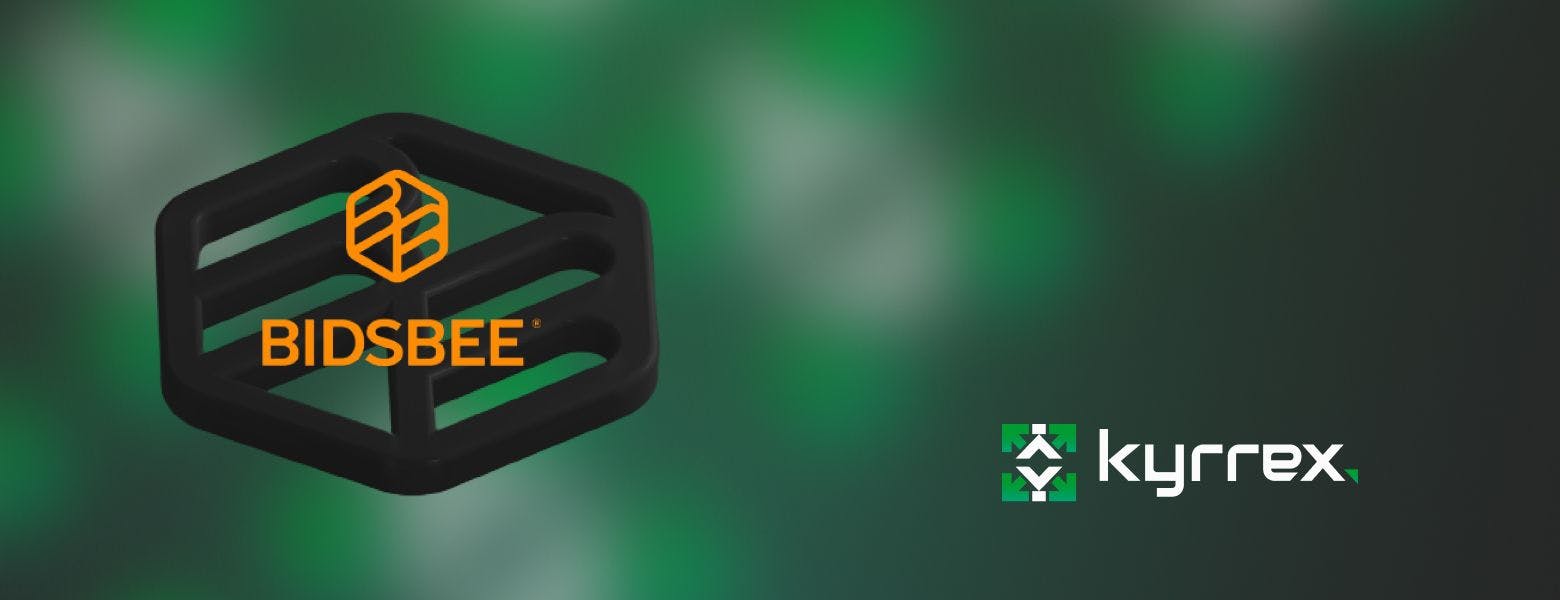
Kyrrex's Partner Bidsbee Launching Its Services
Crypto trading has always been a privilege for experienced traders with high-risk appetites, however, the times have changed, and new services come into existence that serve both professional traders and provide access to the world of crypto trading for newbies.
Bidsbee, Our Partner Platform for Social Crypto Trading, Is Going Live
Bidsbee, our partner platform for trading crypto, is one of such services, and it has gone live. The Bidsbee founders and investors believe that all the benefits of crypto trading shall be accessible to anybody independently of their knowledge and experience. To make it happen, the platform offers such benefits as:
- An opportunity to manage all CEX accounts in a single place.
- Complementing the basic CEX functionality by adding an extensive range of instruments and enabling expert traders to benefit in any market conditions.
- Allowing beginners to leverage the expertise of professionals by copying their trades.
- Accurate and consistent statistical data and alerts for a more systematic approach to trading.
Along with extensive functionality and easiness of use, Bidsbee offers all willing to learn more about crypto trading an extensive section of educational materials and guides. With it, the team aims to popularize crypto trading and speed up the mass adoption of crypto.
Trading in a Non-custodial Environment
Bidsbee doesn’t store users’ funds, nor does it require them to pass a KYC process. The platform applies the strongest security measures to ensure that all users’ API keys are safe, and funds are secured.
Thus, traders can focus on their trading activities and earning while Bidsbee takes care of the safest environment for doing so.
Crypto Trading Made Accessible to Anybody
With Bidsbee, trading stops being an area for selected ones. The platform launches the Copy Trading functionality for those who prefer relying on the expertise of professionals, and those who want to test their strategy or try themselves in trading without losing funds, trading with a virtual balance is available.
Bidsbee Functionality
1. Copy Trading
The Copy Trading functionality is developed for beginners and those traders who cannot monitor the market constantly but instead, prefer to rely on the expertise of their colleagues.
To start copying the selected trader’s orders, one shall perform the following steps.
- Create an account on Bidsbee.
- Connect the accounts on CEXes to Bidsbee by using API keys.
- Select a trader whom one wants to copy, and subscribe to.
Once done, the orders of the selected trader will be copied to the subscriber’s account. It is possible to unsubscribe from a trader at any time, and new orders won’t be copied.
The Copy Trading functionality delivers benefits not only to beginners but also to professional traders. Those can open a Public Trader account and let others subscribe to them thus getting additional income.
2. Crypto Terminal
Aiming at providing the top opportunities for traders with any experience and knowledge level, Bidsbee offers an ultimate Crypto Trading Terminal created by traders for traders. A comprehensive set of trading instruments, the widest range of order types, and the use of elaborate trading algorithms promise to bring crypto trading to a qualitatively new level.
3. Crypto Signals
Leveraging all the opportunities that the crypto market offers is impossible without reliable and consistent signals. Traders can choose and set up the crypto signals as per their needs and receive them directly in Telegram.
4.Trading Bots
Those who prefer to automate their trading activities can explore an extensive set of trading bots. Pick one or several bots, purchase them, set them up, and make them trade for you.
Disclaimer
Crypto trading is a highly risky activity. This is why, even though Bidsbee offers all the possible tools to benefit from crypto trading, it doesn’t guarantee you a profit or the absence of losses. The team recommends you to do your own research before placing any order, and use only those funds for trading that you can afford to lose.
New Opportunities for All Types of Traders
Bidsbee aims at making crypto trading accessible to anyone without any limitations and offering top functionality to enable traders to benefit in any market conditions. Future product development is led by this goal. The team is ready to face the challenges and work on adding new functionalities and developing and improving the existing ones to make trading transparent and profitable.
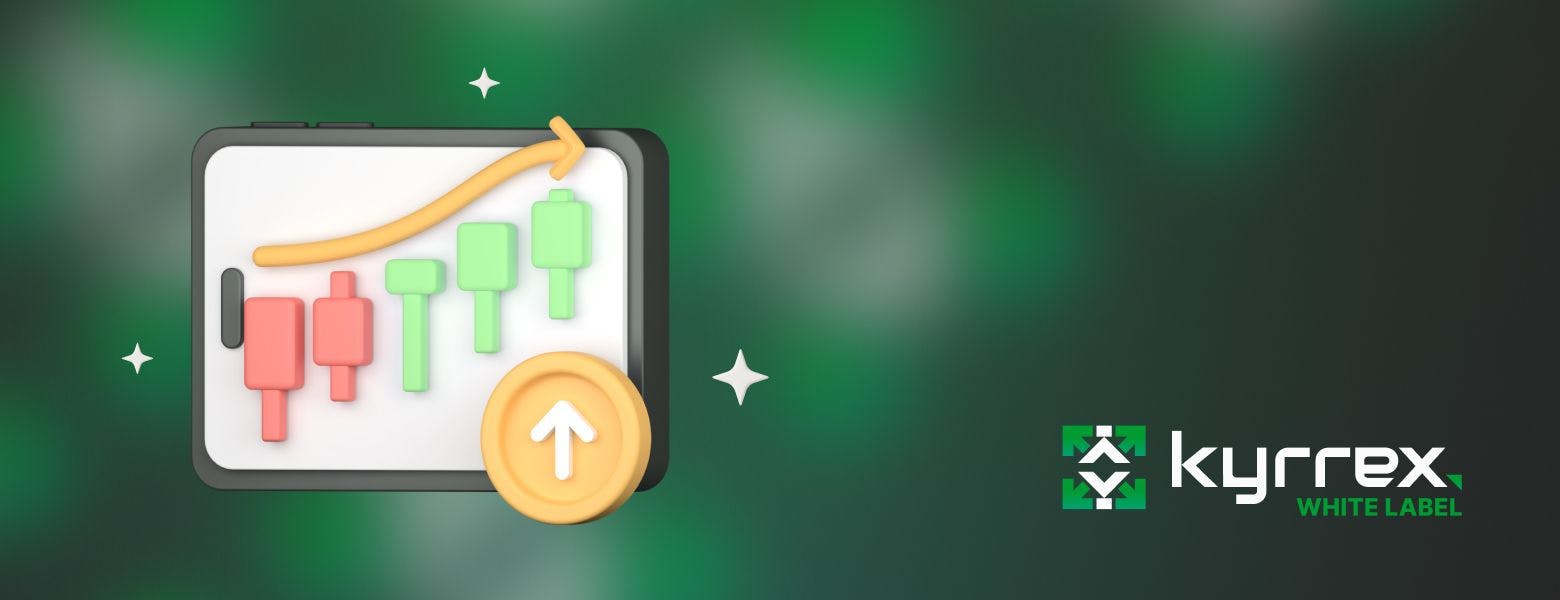
Maximizing Profits: Innovative Ways of Monetizing Your Crypto Exchange
Finding innovative ways to monetize your platform is crucial for the long-term success of a cryptocurrency exchange. In this article, we will explore diverse monetization strategies that can help you maximize profits and stay ahead of the competition.
Standard Revenue-Generation Strategies
These are popular methods of revenue generation for crypto exchanges. Most centralized exchanges, in their various forms, deploy some or all of the methods here to make money and keep the platform running.
1. Trading Fees and Commissions
One of the most common ways to monetize a crypto exchange is through trading fees and commissions. According to Nasdaq, trading fees on most cryptocurrency exchanges range between 0% and 1.5% per trade. By charging a small percentage of each transaction, you can generate a steady stream of revenue. However, it's important to strike a balance between competitive fees and sustainable profitability. Conducting market research to understand the fee structures of your competitors can help you determine the optimal pricing strategy for your exchange.
2. Premium Features and Subscriptions
Offering premium features and subscription plans can be an effective way to monetize your crypto exchange. By providing additional benefits such as advanced trading tools, real-time market data, or priority customer support, you can attract users who are willing to pay for enhanced services. Conducting user surveys and analyzing customer feedback can help you identify the most valuable features to include in your premium plans.
3. Token Listing Fees
As the crypto market continues to expand, listing fees for new tokens have become a significant source of revenue for exchanges. By charging a fee for listing tokens on your platform, you can generate income from projects seeking exposure to your user base. However, it's important to conduct thorough due diligence on each token to maintain the integrity of your exchange and protect your users from potential scams.
4. Affiliate and Referral Programs
Implementing affiliate and referral programs can be a win-win strategy for both your exchange and your users. By incentivizing users to refer new customers to your platform, you can expand your user base while rewarding your existing users. Offering referral bonuses, discounts on trading fees, or even revenue sharing can motivate users to actively promote your exchange. Tracking and analyzing referral data can help you optimize your program and maximize its effectiveness.
5. Margin Trading and Lending
Introducing margin trading and lending services can open up new revenue streams for your crypto exchange. According to data from CoinMarketCap, the top 5 crypto derivatives exchanges alone process more than $50 billion in daily volume, highlighting its status as a money spinner. By allowing users to trade with borrowed funds or lend their assets to others, you can earn interest or fees on these transactions. However, it's important to implement robust risk management measures and educate your users about the potential risks associated with margin trading and lending.
6. Initial Exchange Offerings (IEOs)
IEOs have gained popularity as a fundraising method for blockchain projects. By hosting IEOs on your exchange, you can charge listing fees and earn a percentage of the tokens sold during the fundraising event. However, it's crucial to conduct thorough due diligence on the projects and ensure compliance with regulatory requirements to protect your users and maintain the reputation of your exchange.
7. NFT Marketplaces
The rise of non-fungible tokens (NFTs) has opened up new opportunities for crypto exchanges to monetize their platforms. By creating an NFT marketplace or partnering with existing ones, you can facilitate the buying, selling, and trading of digital collectibles, artwork, and other unique assets. Charging transaction fees or taking a percentage of each NFT sale can generate revenue while tapping into the growing interest in this emerging market.
Secondary Methods of Revenue Generation for Crypto Exchange Platforms
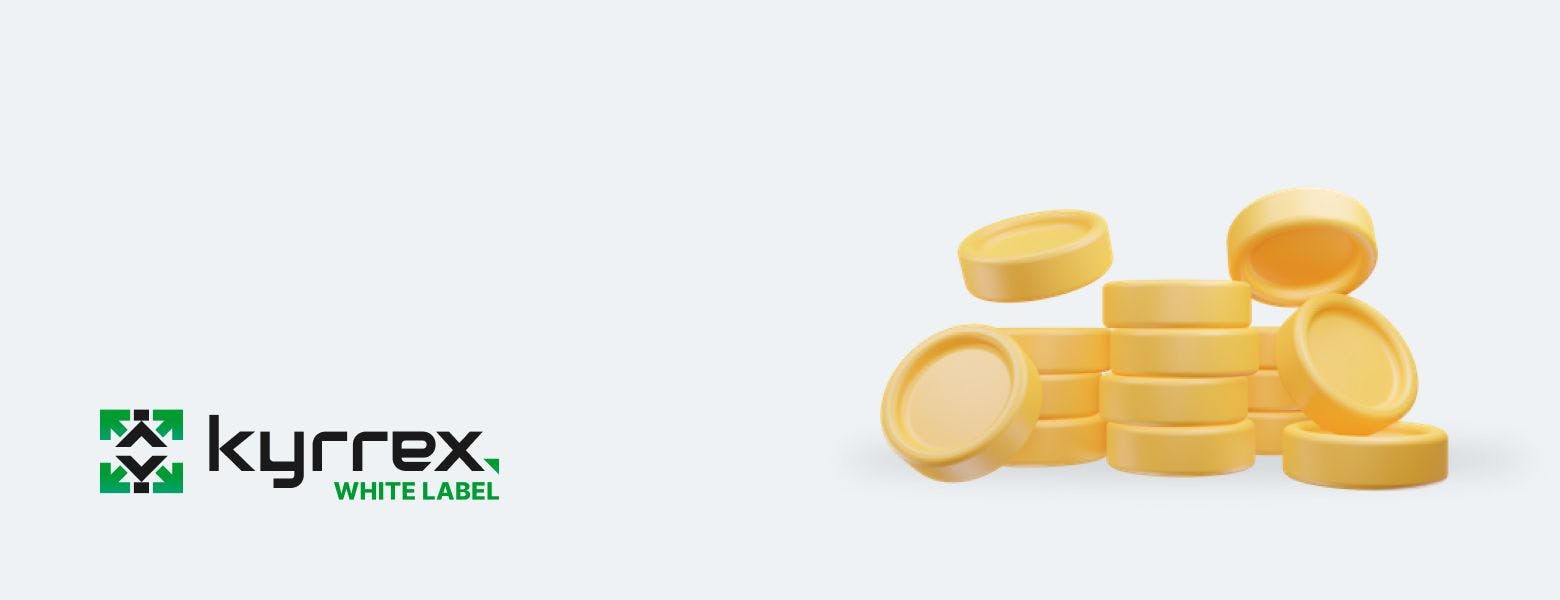
This is where innovation and a coherent business strategy play a key role. The precise methods chosen to augment revenue for your crypto exchange will vary depending on the type of exchange, its target audience, market sentiment, regulatory environment and other factors.
1. Strategic Partnerships and Sponsorships
Collaborating with other companies in the crypto industry through strategic partnerships and sponsorships can provide additional revenue opportunities. By partnering with established projects or sponsoring industry events, you can increase brand visibility and attract new users to your exchange. It's important to choose partnerships that align with your brand values and target audience to ensure a mutually beneficial relationship.
2. Using a Turnkey Solution
Using a turnkey or white label solution instead of building a crypto platform from scratch can be a strategic move that helps you maximize revenue. By leveraging a pre-built solution like Kyrrex White Label, platforms can save valuable time and resources that would otherwise be spent on development, testing, and maintenance. This allows you to focus on your core competencies, such as marketing, customer acquisition, and enhancing the user experience. Additionally, a turnkey solution provides access to a proven infrastructure, advanced trading features, and security measures that have been refined over time. This not only accelerates the platform's time to market but also instills confidence in users, attracting a larger user base and increasing trading volume. By deploying a turnkey solution like Kyrrex White Label, you can minimize upfront costs and streamline operations, thereby allocating more resources towards monetization strategies, such as trading fees, premium features, and partnerships, ultimately maximizing your revenue potential.
3. Educational Resources and Courses
Positioning your crypto exchange as a trusted source of knowledge and education can be a valuable monetization strategy. By offering educational resources, tutorials, and online courses on topics such as blockchain technology, cryptocurrency trading strategies, or security best practices, you can attract users who are willing to pay for premium educational content. This not only generates revenue but also enhances your brand reputation as an authority in the industry.
4. Sponsored Content and Advertising
Partnering with relevant brands and projects to display sponsored content or advertisements on your exchange platform can be a lucrative monetization strategy. By carefully selecting partners that align with your target audience and maintaining transparency about sponsored content, you can generate revenue while providing value to your users. However, it's important to strike a balance between monetization and user experience to avoid overwhelming your users with excessive advertising.
5. Data Analytics and Insights
Leveraging the data generated by your crypto exchange can provide valuable insights that can be monetized. By analyzing trading patterns, market trends, and user behavior, you can offer data analytics services or sell aggregated data to researchers, institutional investors, or other market participants. Ensuring data privacy and compliance with regulations is crucial when exploring this monetization avenue.
6. Community Building and Events
Building a strong community around your crypto exchange can create opportunities for monetization. By organizing virtual or physical events, meetups, or conferences, you can bring together industry experts, thought leaders, and enthusiasts. Charging ticket fees, securing sponsorships, or offering premium access to exclusive networking opportunities can generate revenue while fostering a sense of belonging and loyalty among your community members.
7. Cross-Promotion and Partnerships
Collaborating with other crypto projects or exchanges through cross-promotion and partnerships can be mutually beneficial. By featuring each other's platforms, sharing user bases, or offering joint promotions, you can expand your reach and attract new users. This can be monetized through revenue-sharing agreements or by leveraging the increased user base to drive more trading activity on your exchange.
Final Words
Being able to successfully monetize your crypto platform is essential for long-term success. By implementing a combination of trading fees, premium features, token listing fees, affiliate programs, margin trading, IEOs, strategic partnerships and secondary avenues of generating revenue, you can maximize profits and ensure the financial stability of your crypto exchange. However, it's important to continuously monitor market trends, analyze user feedback, and adapt your monetization strategies to stay ahead of the competition. Remember, the key to success lies in understanding your target audience, providing value-added services, and maintaining a strong brand image in the crypto community.

Kyrrex's Advantages Available to All European Users
In response to the needs of our clients, we're excited to present the all-new Kyrrex app, a significant upgrade in our quest to revolutionize digital finance. It is tailored specifically for European users but available to every institutional or individual user! For those who prefer desktop trading, Kyrrex also offers an established experience via the web interface. The refined app meets the stringent standards and requirements set by regulators. European users can now freely manage their cryptocurrencies, facilitating transactions, including those with fiat, in a manner that was previously inaccessible.
The Kyrrex app, available on iOS and Android, is more than just a tool — it's your gateway to seamless cryptocurrency trading. Designed for both novice traders and experts, it ensures everyone can navigate with ease.
Our dedication to user accessibility and top-notch functionality highlights the value of choosing Kyrrex in today's trading environment.
- Unified account: a single multi-currency account that supports cryptocurrencies and fiat (EUR).
- Versatile transactions: easily make deposits or withdrawals via your VISA/MasterCard or bank transfer (SEPA).
- Intuitive trading platform: a multifunctional platform with an intuitive interface to meet all your needs.
- Cost-effective: enjoy the benefits of low-fee options whether you're trading, converting, sending, or receiving payments.
- Market liquidity: we ensure high market liquidity, enabling efficient transaction performance.
- 24/7 support: our dedicated customer support is available round the clock to assist you.
In celebration of our European launch, we're hosting a draw for new clients. Make your first deposit by October 30th and stand a chance to win rewards up to 300 USDT!
“The flexibility of cryptocurrencies can be particularly beneficial for businesses operating in international markets, where traditional payment methods are slow, expensive, and subject to currency conversion fees. Kyrrex offers the most convenient instruments to convert and operate fiat and cryptocurrencies. Also, with the rise of cryptocurrencies in recent years, we understand that there are concerns about their safety and security. We would like to assure our clients and stakeholders that we have implemented strict safety measures for all transactions,” — Mykhailo Romanenko, co-founder of Kyrrex.
Download the Kyrrex app and access real-time market data that can help you make informed investment decisions.
Stay tuned for more exciting surprises, including exclusive interactions with our esteemed ambassadors.
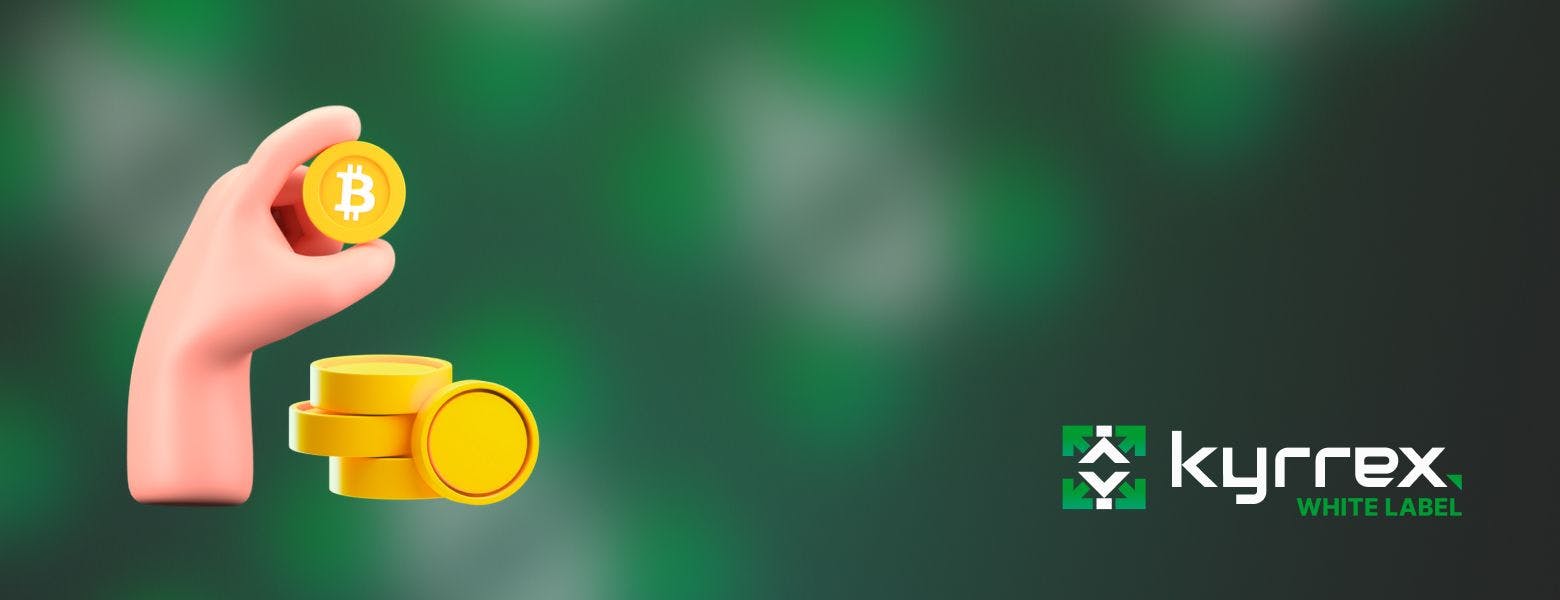
How Much Does It Cost to Create a Bitcoin Exchange?
Have you ever dreamt of creating your own Bitcoin exchange platform in the thriving cryptocurrency market? Imagine being at the forefront of the market, facilitating peer-to-peer cryptocurrency transactions while earning transaction fees. But how much does it cost to create a Bitcoin exchange? In this blog post, we will break down the various factors influencing the cost of creating a Bitcoin exchange, from development to marketing strategies.
Short Summary
- The cost of a Bitcoin exchange platform is determined by factors such as development costs, security measures, licensing and compliance requirements.
- Key components include trading engine, user interface/experience and wallet integration.
- Alternatives to custom development are white label solutions or clone scripts for quick launch at lower cost.
Determining the Cost of a Bitcoin Exchange Platform
The cost of creating a Bitcoin exchange depends on various factors, including:
- Development costs
- Security measures
- Licensing and compliance requirements
- Size of the development team
- Estimated growth rate of the global cryptocurrency market
All of these factors play a crucial role in determining the overall cost of crypto exchange platforms, as well as the individual cost of a crypto exchange platform.
The tools and technologies employed, such as traditional development approaches or cloud-based solutions, can also significantly impact the crypto exchange development cost.
Development Costs
The cryptocurrency exchange development cost can range from $50,000 to $150,000, depending on the complexity and features of the platform. This includes hiring a development team, implementing necessary features, and ensuring platform scalability.
Scalability is essential to guarantee that the platform is prepared to accommodate the volume of thousands of active users with millions of cryptocurrency transactions occurring daily.
Security Measures
Security measures are a critical aspect of any crypto exchange, as they protect user data and funds. Implementing robust security protocols, encryption, and two-factor authentication are essential factors in creating a secure and reliable exchange platform.
For example, Coinbase, one of the leading crypto exchanges, employs a comprehensive security system to safeguard customer funds. This includes:
- Storing 98% of funds offline
- Distributing bitcoins across multiple secure deposit boxes and vaults
- Disconnecting data from the internet
- Implementing a two-step verification process
Licensing and Compliance
Licensing and compliance costs depend on the jurisdiction and regulatory requirements for operating a cryptocurrency exchange business. It is essential to obtain a crypto exchange licence and implement anti-money laundering strategies and know-your-customer (KYC) procedures.
Moreover, it is advisable to seek legal counsel to guarantee that all licensing requirements are fulfilled.
Key Components of a Bitcoin Exchange
A successful Bitcoin exchange comprises key components such as a trading engine, user interface and experience, and wallet integration. These components are crucial for providing a seamless and user-friendly platform that can handle the vast number of cryptocurrency transactions on cryptocurrency exchanges and attract users to the exchange.
Trading Engine
The trading engine is the central component of a crypto trading platform, responsible for executing trading transactions on the cryptocurrency market, matching buy and sell orders, and ensuring the proper functioning of internal processes. With an efficient trading engine in place, users can execute transactions seamlessly and enjoy a smooth trading experience.
The trading engine is the backbone of the exchange platform, and its performance is critical for the exchange.
User Interface and Experience
A user-friendly interface and seamless user experience are crucial for attracting and retaining users on a Bitcoin exchange platform. The user interface and experience component encompasses:
- Graphical user interface
- Trading platform design
- Navigation
- Responsiveness
- User-friendliness
By offering a smooth and intuitive trading experience, users are more likely to have a positive experience with the platform and continue using it.
User experience is a key factor in the success of any Bitcoin exchange platform.
Wallet Integration
Wallet integration allows users to securely store, send, and receive digital currencies, including their own cryptocurrency, on the cryptocurrency exchange platform. This involves integrating cryptocurrency wallets into the exchange platform, thus enabling users to effectively manage their crypto assets and execute transactions on the blockchain network.
Wallet integration can be achieved either by developing a wallet from the ground up or integrating existing third-party wallets.
Blockchain Technology and Infrastructure
Building a blockchain technology infrastructure for a Bitcoin exchange can be accomplished using existing blockchain infrastructure solutions or custom development. Blockchain technology utilizes a decentralized network of computers that maintain a shared ledger of all Bitcoin transactions. This infrastructure guarantees the security, transparency, and immutability of the transactions on the exchange platform.
By leveraging the power of blockchain technology, Bitcoin exchanges can ensure that their customers’ funds are protected.
Existing Blockchain Solutions
Existing blockchain solutions offer cost-effective and time-saving options for building a Bitcoin exchange. Some popular existing blockchain solutions include:
- Ethereum
- Hyperledger
- EOS
- BitShares
- Chainlink
By utilizing these solutions, developers can save time and resources, allowing them to focus on other aspects of the platform, such as user interface and marketing strategies.
Custom Blockchain Development
Custom blockchain development allows for greater flexibility and customization, but may require more time and resources. The process of custom blockchain development involves:
- Defining the requirements of the exchange platform
- Designing the architecture of the blockchain solution
- Developing the code
- Testing the code
- Deploying the solution
Although custom blockchain development can be more costly than existing blockchain solutions, the potential benefits of increased security and scalability may outweigh the additional costs.
Marketing and User Acquisition Strategies
Marketing and user acquisition strategies are essential for driving traffic and increasing the user base on a Bitcoin exchange platform. Employing strategies such as:
- SEO
- Content marketing
- Social media marketing
- Email marketing
- Influencer marketing
- Referral programs
Can help attract users and grow the exchange.
Some successful examples of marketing and user acquisition strategies include Coinbase’s referral program and Binance’s influencer marketing campaign, which helped these companies gain millions of users.
Digital Marketing Campaigns
Digital marketing campaigns, including social media, content marketing, and paid advertising, can help attract users to the platform. For instance, the Dogecoin Foundation launched a successful digital marketing campaign titled “Dogecoin Millionaire” in 2021, resulting in increased awareness of Dogecoin and an expanded user base.
Similarly, Coinbase ran a successful campaign in 2020 named “Bitcoin for Beginners,” which was successful in educating users about Bitcoin and increasing its user base.
Referral and Affiliate Programs
Referral and affiliate programs incentivize existing users to promote the exchange and bring in new users. Users receive a commission or reward for referring new users to the exchange, generally a percentage of the trading fees paid by the new user.
Popular referral and affiliate programs for Bitcoin exchange platforms include:
- Binance affiliate program
- Coinbase affiliate program
- Coinmama affiliate program
- Changelly affiliate program
- CEX.IO affiliate program
Ongoing Operational Expenses
Ongoing operational expenses, such as platform maintenance, customer support, and updates and feature enhancements, are important considerations for the overall cost of running a Bitcoin exchange platform. Ensuring the smooth functioning of the platform and addressing any technical issues that may arise are essential for maintaining user satisfaction and trust in the platform.
It is important to consider the cost of these operational expenses when evaluating the total cost of running.
Platform Maintenance
Regular platform maintenance ensures smooth functioning and addresses any technical issues that may arise. Preventive and corrective maintenance are the two primary types of maintenance available. Preventive maintenance involves regularly inspecting the platform for potential issues and resolving them before they become a problem, while corrective maintenance involves rectifying any issues that emerge after the platform has been launched.
Costs associated with platform maintenance include hosting fees, server maintenance, and software updates.
Customer Support
Providing responsive customer support is crucial for maintaining user satisfaction and trust in the platform. Offering various customer support options can help address users’ questions and concerns, including:
- Live chat
- Phone
- Social media support
The costs associated with customer support include offering technical assistance, responding to customer inquiries, and resolving customer complaints.
Updates and Feature Enhancements
Regular updates and feature enhancements help keep the platform competitive and relevant in the ever-evolving cryptocurrency market. The costs for updates and feature enhancements include bug fixes, feature additions, and security patches.
Staying up-to-date with the latest features and improvements ensures that the platform remains secure and compliant with the most recent regulations.
Cost-Effective Alternatives: White Label Solutions and Clone Scripts
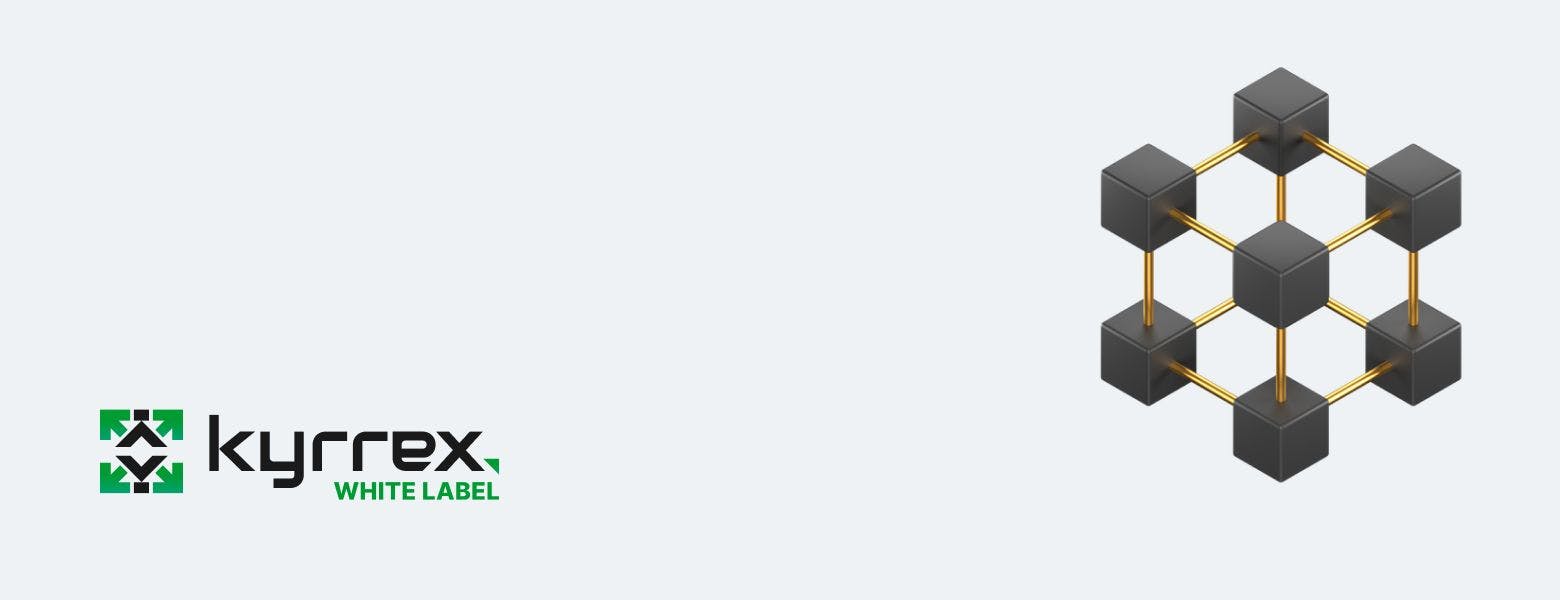
Cost-effective alternatives to building a Bitcoin exchange from scratch include white label solutions and clone scripts. These options offer pre-built, customizable exchange platforms that can be branded and launched quickly, saving time and resources compared to custom development.
White label solutions provide a ready-made platform that can be customized with a company’s branding.
White Label Solutions
White label solutions provide pre-built, customizable exchange platforms that can be easily branded and launched in a timely manner. They offer a cost-efficient approach to swiftly launching a Bitcoin exchange, as they are pre-constructed and require minimal customization.
The main disadvantage of white label solutions is that they are not as flexible as custom-built solutions, thus potentially unable to meet the user’s exact requirements and may not scale as rapidly as custom-built solutions.
Kyrrex White Label, however, offers the best of both worlds: a turnkey solution designed to cater to the fluctuating demands of different clients. Whether what's required is a small OTC platform to serve local needs or a medium-sized crypto exchange intended to attract a more varied user base, Kyrrex White Label has something for everyone. The platform also offers unlimited liquidity to clients via its Liquidity Hub and experienced legal assistance in securing a cryptocurrency licence from regulators.
Clone Scripts
Clone scripts are pre-built exchange platforms modelled after popular exchanges, providing a cost-effective and time-efficient solution for establishing a Bitcoin exchange. The expense of utilizing clone scripts is contingent upon the features and customization needed, generally ranging from $5,000 to $20,000.
By choosing clone scripts, developers can focus on other aspects of the platform, such as user interface and marketing strategies.
Summary
In conclusion, the cost of creating a Bitcoin exchange depends on various factors, including development costs, security measures, licensing and compliance requirements, and ongoing operational expenses. Utilizing cost-effective alternatives like crypto white label solutions and clone scripts can save time and resources, allowing you to focus on other aspects of the platform, such as user interface and marketing strategies. By carefully considering all these factors and making informed decisions, you can build a successful Bitcoin exchange platform that meets the needs of your users and thrives in the ever-evolving cryptocurrency market.
Frequently Asked Questions
How much does it cost to make your own crypto exchange?
Developing a cryptocurrency exchange platform can range from $50,000 to $98,000 for basic features. For a website and app, the cost can be anywhere from $132,000 to $145,000.
Depending on the platform’s size and model, the cost could even exceed $300,000.
What are the fees for Bitcoin exchanges?
The trading fee for Bitcoin exchanges usually starts at 0.10% for takers and 0.080% for makers, and can decrease to as low as 0.020% for takers and -0.005% for makers depending on the trading volume and OKB held.
For BTC/USD exchanges, a substantial fee between 0.1% and 6.0% is generally included.
How much does a white label exchange cost?
The cost of developing a White Label Crypto Exchange can range from $40,000 to $60,000.
Consider hiring a business like Kyrrex with expertise in the development process for an accurate price estimate.
Why is crypto crashing?
Rising U.S. bond yields, a hawkish FOMC stance, and a strong U.S. dollar have contributed to the crypto market downturn.
The combination of these factors has caused a sharp decline in the prices of major cryptocurrencies, such as Bitcoin and Ethereum. Investors are now looking for ways to protect their investments and minimize their losses.
What are the key components of a Bitcoin exchange platform?
Key components of a Bitcoin exchange platform include a trading engine, user interface and experience, and wallet integration for a seamless experience.
- 1
- 2
- 3
- 4
- 5
- 6
- 7
- 8
- 9
